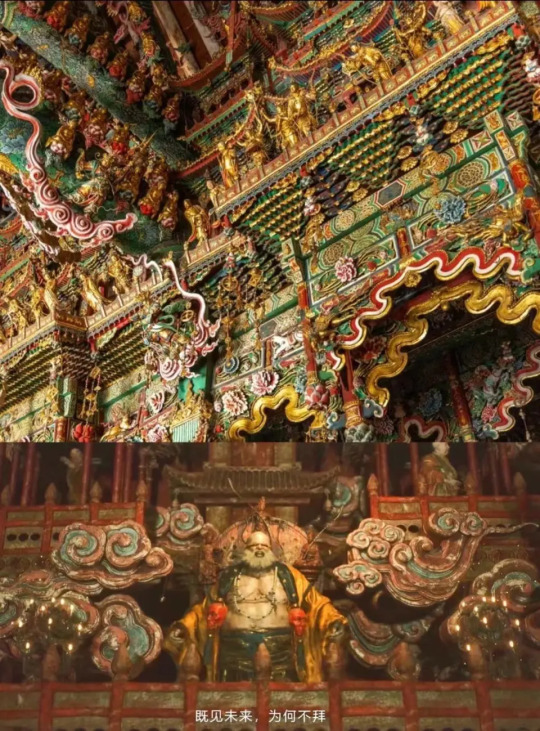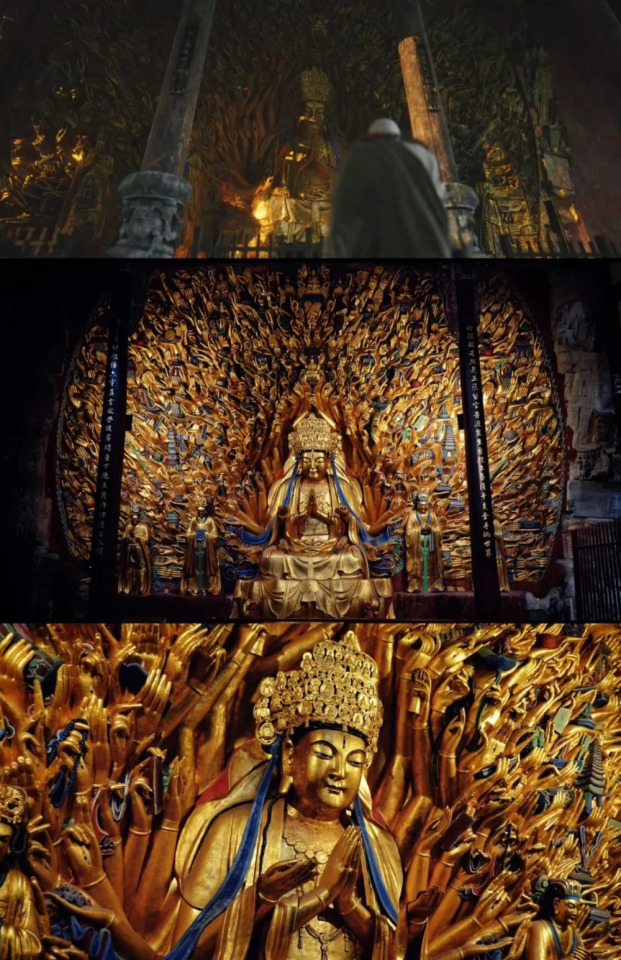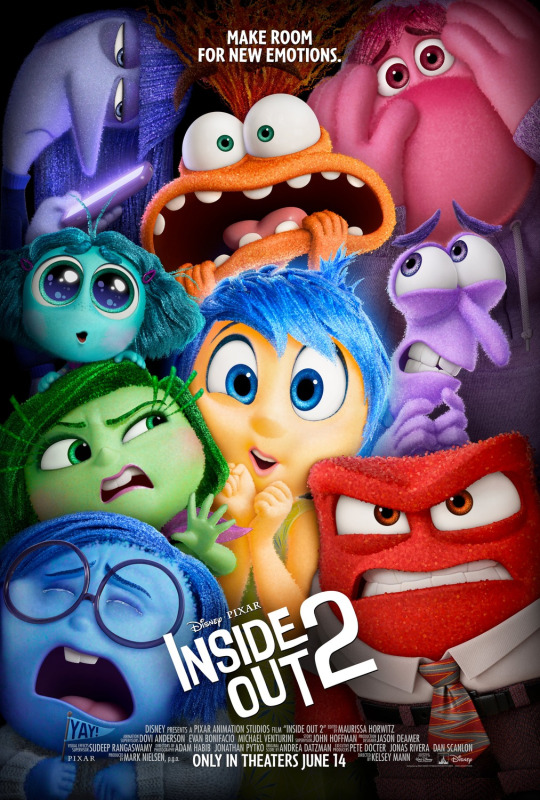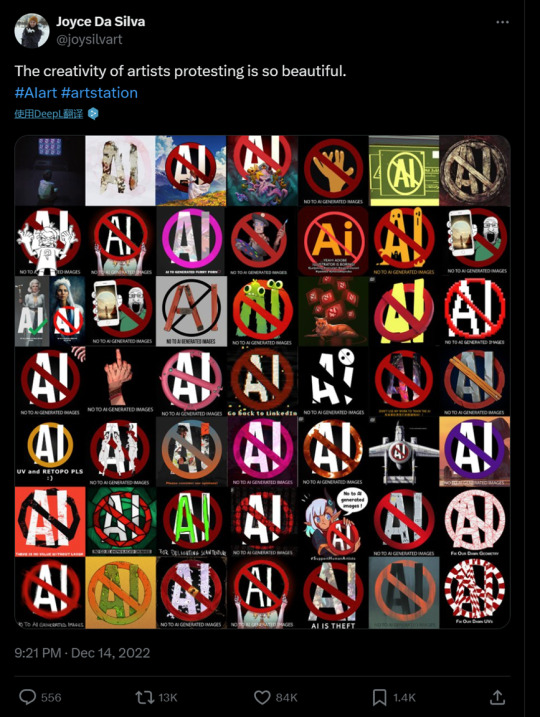Don't wanna be here? Send us removal request.
Text
Industry Forefront post 10:
"Black Myth: Wukong" officially launched on Steam on August 20th, and it is an action-adventure game built on the Unreal Engine 5, deeply rooted in Chinese cultural elements. During its development, the team utilized advanced 3D scanning technology to faithfully incorporate real-world temples and statues into the game. By employing high-resolution cameras and laser scanning tools, they captured every intricate detail of these structures, including surface textures and unique architectural features.

These high-precision 3D models were then integrated into Unreal Engine 5, becoming part of the game environment. The use of this technology significantly enhanced the game's realism and historical depth, perfectly recreating the essence of ancient Chinese culture, offering players an immersive experience. This approach not only elevated the game's visual quality but also provided a solid foundation for its narrative and world-building, ensuring that every detail felt vivid and authentic.
Comparison Between Game Environments and Real-World Environments:


Moreover, the application of 3D scanning technology drastically reduced development time, allowing the team to focus more on creative design and refining details. As a result, the game's visuals reached a cinematic level of quality while being enriched with cultural significance, making it more engaging and impactful.

For concept artists, this technology allows for the rapid creation of realistic scenes using scanned 3D assets. After utilizing Quixel Bridge's 3D scanned assets, I believe this process can greatly enhance the efficiency of scene design for concept artists, making it an invaluable tool in the creation process.
reference:
Game Science. (2024) Black Myth: Wukong. [video game]. Game Science Studio.
Epic Games. (2020) Unreal Engine 5. [software]. Available at: https://www.unrealengine.com (Accessed: [20.06.2024]).
0 notes
Text
Industry Forefront post 9:
On the Extremes in Concept Design: Insights from "Alien: Romulus"
During the creation of my graduation project, I realized that successful concept design not only involves capturing the complexity of characters but, more importantly, emphasizes their extremes, directness, and intense emotional expression. Initially, I aimed to give each character a well-rounded personality, but this approach often restricted my creativity. Mr Leon advised me to study the character designs in Atlantis, which helped me understand that the success of character design lies in its distinct and extreme personality rather than in complexity.

Alien: Romulus serves as an excellent example of how concept design can amplify emotional resonance through extreme visual elements. H.R. Giger’s work combines technology, horror, and biology to create a creature that is both terrifying and mysterious. This design not only surpasses audience expectations but also vividly represents the film's core idea—"In space, no one can hear you scream." By employing symbolic language, the design effectively conveys the film's essence.
This concept of extreme design has greatly influenced my character creation in my graduation project. To ensure that the characters leave a lasting impression both visually and emotionally, I shifted my focus away from complexity and towards emphasizing the extremities, spectacle, and distinctiveness of each character. This approach means concentrating on the core traits and emotions of the characters, using exaggeration and simplification to create designs that are both visually striking and memorable.
In summary, concept design requires balancing simplicity with extremity, strengthening the unique features and visual impact of characters to achieve deeper emotional expression and audience connection. This philosophy has not only guided my design direction but also provided me with a clearer goal throughout the creative process.
reference:
Alien: Romulus (2024). Directed by [ Fede Álvarez]. [20th Century Studios].
0 notes
Text
Industry Forefront post 8:
My chosen 3D production workflow and the changes UE5 has brought to the 3D game production process.
During my research into the development process of Black Myth: Wukong, I was particularly drawn to UE5's Nanite virtualized geometry technology. Nanite allows developers to import extremely detailed models without worrying about traditional polygon limits or manually creating LOD models, greatly simplifying the workflow and enabling cinematic-level visuals with enhanced real-time rendering quality. However, when I attempted to apply this technology to my project, the rendering results in UE5 did not meet my expectations.

This realization led me to reevaluate my modeling and rendering workflow. Although Nanite theoretically improves efficiency, I opted for a more traditional approach to ensure greater control and precision over the final outcome. I decided to first create low-poly models and then bake the details from the high-poly models onto the low-poly versions in Substance Painter. This process, while more intricate and time-consuming, ensures that the model's details and visual effects are perfectly captured in the final rendering.
Ultimately, I chose to use Blender for rendering instead of UE5. This decision allowed me to ensure that every detail met my expectations during the rendering process. Although this workflow is more labor-intensive, it enabled me to achieve higher precision in my work while preserving my unique design style.
reference:
Game Science. (2024) Black Myth: Wukong. [video game]. Game Science Studio.
Epic Games. (2020) Unreal Engine 5. [software]. Available at: https://www.unrealengine.com (Accessed: [20.06.2024]).
0 notes
Text
Industry Forefront post 7:
Open World Narrative Techniques and the Focus of Concept Designers in Elden Ring DLC:
In the Elden Ring DLC, the open-world design and innovative narrative techniques have significantly influenced the focus of concept designers. As I discussed in a previous blog, the design priorities for concept artists vary greatly depending on the medium, such as competitive games versus films. Increasingly, AAA titles are adopting open-world gameplay, with the recent Elden Ring: Shadow of the Erdtree DLC serving as a prime example of this approach, offering a narrative complexity beyond that typically seen in film.

Reflecting on the history of video game narratives, early games like Tetris (1985) had minimal storytelling due to technical limitations. As technology evolved, side-scrolling pixel games like Super Mario Bros. and Metal Slug introduced simple backstories, often conveyed through text or comics.
Cutscenes gradually became key narrative tools in video games, enhancing storytelling, setting moods, and guiding players' emotional experiences. A notable example is Final Fantasy VII (1997), which used extensive pre-rendered animations to support its narrative, while Half-Life (1998) utilized a first-person perspective to immerse players deeply in the storyline, marking the dawn of "cinematic storytelling" in gaming.

However, what truly sets video games apart from traditional media is their interactivity and the active role of the player. Video games require player engagement and interaction, allowing for a unique level of "immersion." Non-linear and environmental storytelling are exclusive to video games, offering players the ability to experience stories from various angles and uncover plot elements through exploration.
Depending on the narrative style, concept designers must adjust their focus. For games with cinematic storytelling or extensive cutscenes, designers should prioritize storyboard creation, as montage editing techniques are essential for storytelling. Conversely, for open-world or competitive games, designers should focus on using character expressions and equipment to hint at backstories and enhance immersion and character depth.
reference:
FromSoftware. (2024). Elden Ring: Shadow of the Erdtree. [video game]. Tokyo: Bandai Namco Entertainment.
Pajitnov, A. (1985). Tetris. [video game]. Moscow: Academy of Sciences of the Soviet Union.
Square Enix (1997). Final Fantasy VII. [video game]. Tokyo: Square Co., Ltd.
Valve Corporation (1998). Half-Life. [video game]. Bellevue, Washington: Sierra Studios.
'Cutscene'Wikipedia. Available at: https://en.wikipedia.org/wiki/Cutscene(Accessed: 25 october 2023).
Uricchio, W. (2005). Simulation, history, and computer games. Handbook of computer game studies, 327, 338.
Lowood, H. (2012). A brief biography of computer games. In Playing video games (pp. 27-46). Routledge.
Ostenson, J. (2013). Exploring the Boundaries of Narrative: Video Games in the English Classroom. The English Journal, 102(6), 71–78.
Seiwald, R. (2022). Creating Game History: Intertextuality and the Formation of a Collective Memory of Games. In T. Funk (Ed.), Video Game Art Reader: Volume 4 (pp. 59–76). Amherst College Press.
0 notes
Text
Industry Forefront post 6:
Psychology and Shape Psychology in Inside Out 2
Inside Out 2 continues to explore the complexities of human emotions, building on the core ideas of the first film. The movie further breaks down and refines emotions by assigning them specific characters, making it easier for audiences, especially younger viewers, to understand both their own emotions and those of others.

In Inside Out 2, the characters represent basic human emotions such as Joy, Sadness, Fear, Anger, and Disgust. New emotions are introduced in the sequel, further exploring the diversity and complexity of emotional experiences. These emotions don't just exist independently; they interact and influence one another, showcasing the coexistence and interdependence of emotions. For example, Joy and Sadness in the first movie illustrated how emotions can coexist and depend on each other, showing that even in moments of happiness, sadness can be an important emotional experience.
The Inside Out series is deeply connected to psychology, particularly the field of emotional psychology. The portrayal and handling of emotions in the film are heavily influenced by psychological theories, especially Paul Ekman's theory of basic emotions, which posits that humans have a set of universally present basic emotions that are innate. The film visualizes these emotions, applying Ekman's theory to storytelling, making complex psychological processes more accessible and understandable.
In Inside Out 2, human emotions are simplified to make them more understandable for children. Additionally, the film’s style simplifies character traits, embodying principles of shape psychology, which I also applied in my concept design process. In design, "shape language" is a crucial factor. Different shapes evoke different feelings in the audience, often rooted in human visual experience. For example, "triangles" often evoke a sense of sharpness and danger, a visual experience that forms the foundation of contemporary visual design.
In my major project, I extensively used shape psychology. For instance, in designing the Paranormal Researcher character, I employed sharp shapes to convey a sense of danger, while in designing the Weapons Master, I used squares to highlight the character's combat abilities.

The novel Flatland: A Romance of Many Dimensions helped me understand the concepts of "species dimension" and "visual dimension." The book describes how beings in zero-dimensional, one-dimensional, and two-dimensional worlds perceive their environment. Although we are three-dimensional beings, we perceive the world through a two-dimensional visual system, and our visual experience is a result of this perception. Thus, art forms like painting, photography, and film simulate our visual system, expressing visual experiences in two dimensions, forming an essential foundation for artistic creation. In my project, I fully utilized these principles to enhance my design effects.
reference:
Inside Out 2 (2024) Directed by Kelsey Mann [Film]. Burbank, CA: Walt Disney Pictures.
'Flatland: A Romance of Many Dimensions'(1884)Wikipedia. Available at: https://en.wikipedia.org/wiki/Flatland (Accessed: 03.07. 2024).
0 notes
Text
Industry Forefront post 5:
Can I Directly Use AI to Generate 3D Models from My Concept Designs?
When I began creating my 3D models, I considered the possibility of using AI to directly generate 3D models from 2D concept art. This technology certainly has its appeal, especially as showcased in projects like Black Myth: Wukong, which demonstrated significant advantages in the creative process. However, after thorough research, I discovered that this method has several limitations, making it not entirely suitable for my project's needs.

Firstly, AI-generated 3D models often lack sufficient depth information, particularly when dealing with complex shapes, resulting in models that may lack accuracy and completeness. These AI-generated models typically require extensive manual refinements and adjustments to meet the desired precision and detail, which means that although AI can accelerate the initial modeling process, the post-production work might increase my workload.
Secondly, preserving the artistic style is a crucial aspect of my concept design. AI-generated 3D models sometimes struggle to fully retain the original artistic style of the 2D concept art. Particularly during the conversion process, some unique visual effects may be lost or distorted, leading to deviations from my intended design in the final 3D model.
Furthermore, this technology heavily relies on advanced AI tools and 3D modeling software, requiring designers to have a high level of technical knowledge. For me, this not only could limit my creative freedom but also might impact my design efficiency. More importantly, for complex models, the automatically generated 3D models may fail to accurately capture all the details, requiring me to spend more time manually refining them to ensure every part of the model meets expectations.
Considering these factors, I ultimately decided to use traditional 3D modeling methods to complete my monster designs. By manually sculpting and meticulously handling the details, I can better control the outcome and ensure that the final model faithfully reflects my concept design intent. While this method is more time-consuming, it allows me to have a better grasp of the details, thereby achieving the visual effects I desire.
reference:
Game Science. (2024) Black Myth: Wukong. [video game]. Game Science Studio.
Epic Games. (2020) Unreal Engine 5. [software]. Available at: https://www.unrealengine.com (Accessed: [20.06.2024]).
0 notes
Text
Industry Forefront post 4:
Comparing Similar Characters in Competitive Games (New Medium) and Films (Old Medium) and My Career Goals
In my planning folder, I outlined my goal of becoming a freelance concept designer, working on both exciting game and film projects. However, during the creation of my major project, I gained new insights into how different mediums require distinct approaches to concept design. These insights have become deeply relevant to my future career path.
For example, I had a discussion with a friend, Lucas, about the portrayal of "vengeful spirits" in Japanese cultural works, such as the films The Grudge and The Ring. In contrast, the 2018 multiplayer horror game Dead by Daylight features a similar character, Rin Yamaoka, rooted in Japanese culture. Unlike the film versions, where spirits often crawl, this game character is designed to stand. This difference arises because, in a competitive game, players must control the spirit, necessitating a standing posture for better visibility. Moreover, while spirits in films typically kill with intangible "curses," in the game, the character wields a physical weapon—a katana—to interact with the gameplay mechanics.


These design decisions are based on understanding the medium’s unique requirements. As a concept designer, recognizing the distinct needs of each medium has profound implications for my career development, reinforcing the importance of tailored design approaches.
reference:
The Grudge (2004) Directed by Takashi Shimizu [Film]. USA: Columbia Pictures.
The Ring (2002) Directed by Gore Verbinski [Film]. USA: DreamWorks Pictures.
Dead by Daylight (2016) [Video game]. Behaviour Interactive.
0 notes
Text
Industry Forefront post 3:
The Art Style I Want to Adopt and Its Influence from the Newly Released Game "No Rest for the Wicked" and Moon Studio's Artistic Pursuits, and My Final Choice of Style
In choosing the art style for my final project, I was inspired by the 2D conceptual art style of "No Rest for the Wicked" and the artistic pursuits of Moon Studio. "No Rest for the Wicked" successfully creates a creepy, oppressive atmosphere through dark fantasy elements combined with high-contrast visuals. The distinctive feature of this style lies in its use of exaggerated lines and color contrasts, further intensifying the game's atmosphere of corruption and gloom. This stylized design not only grabs the player's attention but also effectively conveys the emotional core of the game.

Additionally, projects like "Arcane" deliberately adopt a stylized rendering approach to create a unique visual effect that stands out among numerous visual contents. This stylized rendering isn't just about capturing attention but also about better conveying emotional depth and narrative. Through stylization, creators can avoid the emotional disconnection that excessive realism might bring, making it easier for the audience to resonate with the characters.

In the context of modern technological advancements, although the visual effects of video games and films are becoming increasingly realistic, this realism does not always enhance the appeal of virtual worlds. For example, in Disney's live-action adaptation of "The Little Mermaid," although the film used the most advanced CGI technology to make the characters very "lifelike," audience feedback showed that this excessive realism weakened the characters' charm and emotional resonance. In the 1989 animated version of "The Little Mermaid," animators gave the characters unique personalities through exaggerated expressions and actions, making them more vibrant, but these qualities were diminished in the live-action version due to its focus on realism.

Based on these observations and reflections, I decided not to make realism the primary design goal in my final project. Instead, I will maintain a stylized approach to character design, making the work more vibrant and expressive. This approach will not only enhance the audience's emotional engagement but also make my work more visually distinctive and intriguing. In this way, I hope my final project will resonate better with the audience and leave a lasting impression both visually and emotionally.
References:
The Little Mermaid (1998) Directed by J. Musker & R. Clements. [Feature Film]. Buena Vista Pictures.
The Little Mermaid Remake vs. Classic: Most Important Differences, Explained (2023) YouTube. Available at: https://youtu.be/kCrJhg8OTzE?si=K5fWRt2mC8vToM5L
The Making of The Little Mermaid 1989 - Treasures Untold - Retro N8(2018) YouTube. Available at: https://youtu.be/kCrJhg8OTzE?si=blJdSHTRxFg2lRE4
No Rest for the Wicked (2024). No Rest for the Wicked. Version 6.0.Moon Studio. Available at:《恶意不息》 | Private Division Store
(Accessed: 14 June 2024).
Arcane (2021). Arcane. Season 1. Riot Games, Fortiche Production. Available at: https://www.netflix.com (Accessed: 24 June 2024).
0 notes
Text
Industry Forefront post 2:
My Thoughts on the Use of Generative AI in My Project:
The growing application of generative AI in the field of game art design has led me to consider incorporating this technology into my own work. Generative AI can significantly enhance efficiency by rapidly producing images based on prompts, allowing me to generate more content in a shorter amount of time. However, I question whether this technology might undermine my creative freedom and control as an artist. After seeing many artists express frustration and anger over the encroachment of generative AI, I began to wonder if this technology might eventually replace human artists or if it would simply become a tool for creating cheap, low-value art.
In reflecting on the use of generative AI, I had an in-depth discussion with a friend I met through previous work experiences. This friend has years of experience in the digital art field, and his insights were invaluable in helping me understand the role of generative AI.
We discussed both the advantages and limitations of AI in artistic creation. He pointed out that while generative AI can serve as an advanced tool to help artists improve efficiency, the works it produces often lack the emotional depth and thoughtfulness unique to human creators. He believes that generative AI is well-suited for assisting with repetitive or detail-oriented tasks, but true artistic creation still requires the unique perspective and creativity of human artists.
During our conversation, he also shared his own workflow. He sometimes uses generative AI tools to aid in sketch creation and to spark inspiration, but he always completes the final artwork himself. He feels that while AI technology has value in the creative process, it should not replace the core artistic work done by the artist; instead, it should be seen as a supplemental tool that helps artists save time and energy, allowing them to focus on the more creative and emotionally resonant aspects of their work.
Through this exchange, I solidified my stance. I decided to use generative AI as an auxiliary tool, primarily for secondary tasks like generating background textures, rather than relying on it for core creative work. I believe that this balanced approach will allow me to enhance my efficiency while maintaining the uniqueness of my work.
Reference:
Harry H. J, Lauren B, Jessica C, Mehtab K, Abhishek G, Deja W, Alex H, Johnathan Fl, and Timnit G. (2023). AI Art and its Impact on Artists. (pp.363-374).In Proceedings of the 2023 AAAI/ACM Conference on AI, Ethics, and Society (AIES '23). Association for Computing Machinery, New York, NY, USA. Available at: https://doi.org/10.1145/3600211.3604681 [Accessed on 03.06.24]
Scharre, P., Horowitz, M. C., & Work, R. O. (2018). What is Artificial Intelligence? In ARTIFICIAL INTELLIGENCE: What Every Policymaker Needs to Know (pp. 4–9). Center for a New American Security.
Available at: http://www.jstor.org/stable/resrep20447.5
[Accessed on 04.06.24]
Somepalli, G., Gupta, A., Gupta, K., Palta, S., Goldblum, M., Geiping, J., ... & Goldstein, T. (2024). Measuring Style Similarity in Diffusion Models. arXiv preprint arXiv:2404.01292.
Available at: https://arxiv.org/abs/2404.01292
[Accessed on 03.06.24]
Shafran, A. (2023). THE IMPACT OF ARTIFICIAL INTELLIGENCE ON DESIGN PRACTICE.
Available at: https://scholarworks.calstate.edu/concern/projects/r494vs56f
[Accessed on 01.06.24]
0 notes
Text
Industry Forefront post 1:
The impact of AI on current concept design methods and the response of concept artists.
In the past three years, machine learning-based image generators have proliferated, significantly impacting the field of game art design. However, this rapid development has sparked widespread controversy among digital artists.
Generative AI can quickly produce images through prompts, greatly enhancing design efficiency. With a market value of approximately $43.87 billion in 2023, generative AI is expected to grow to $967.65 billion by 2032, with a compound annual growth rate of 39.6%.

Grand View Research (2018 - 2022) Generative AI Market Size, Share & Trends Analysis Report. Available at: https://www.grandviewresearch.com/industry-analysis/generative-ai-market-report
(Accessed on 19. 05. 24 ).
Despite these advancements, many artists view generative AI as a threat to their creative freedom and copyright. Prominent digital artists like Kan Liu and Philipp A. Urlich have voiced concerns over unauthorized use of their work by AI, leading to infringement on their rights. Urlich, for instance, believes that AI is undermining an industry built on "lifelong learning, passion, and a love for creation." In response, many artists have protested on platforms like ArtStation, but these platforms' responses have often been seen as inadequate in protecting artists' rights.

Silva, J. (2022) 'The creativity of artists protesting is so beautiful.', Twitter, 14 December.
Available at: https://twitter.com/joysilvart/status/1603138150028775424
(Accessed on 19. 05. 24 ).
In contrast, some image service companies like Shutterstock and Getty Images have banned the sale of AI-generated images due to copyright concerns. The worries of artists extend beyond mere style imitation; there is also the fear that generative AI could be used to create harmful content, further damaging their reputation and rights.
The use of generative AI in game art design has increased efficiency but has also sparked widespread debates over copyright, creative freedom, and industry ethics. Addressing these issues will require more industry regulations and policy support to balance technological progress with the protection of artists' rights.
Reference:
Perez-Liebana. D, Samothrakis.S, Togelius.J, Schaul.T, & Lucas, S. (2016). General Video Game AI: Competition, Challenges and Opportunities. Proceedings of the AAAI Conference on Artificial Intelligence, 30(1).
Available at: https://doi.org/10.1609/aaai.v30i1.9869
[Accessed on 03.05.24]
Harry H. J, Lauren B, Jessica C, Mehtab K, Abhishek G, Deja W, Alex H, Johnathan Fl, and Timnit G. (2023). AI Art and its Impact on Artists. (pp.363-374).In Proceedings of the 2023 AAAI/ACM Conference on AI, Ethics, and Society (AIES '23). Association for Computing Machinery, New York, NY, USA. Available at: https://doi.org/10.1145/3600211.3604681 [Accessed on 03.05.24]
Philipp A.U. (2023). Portfolio [Digital Art]. ArtStation.
Available at: https://www.artstation.com/somartist
[Accessed on 10.05.24]
Kan Liu(2023). To friends on Artstation [Announcement]. ArtStation.
Available at: https://www.artstation.com/artwork/Qn1Z2x
[Accessed on 18.05.24]
0 notes